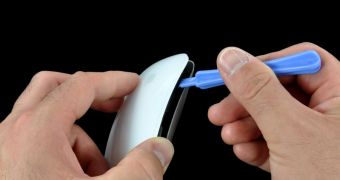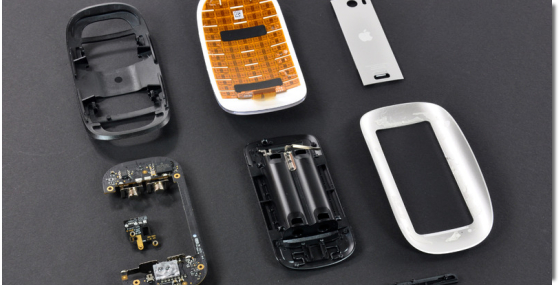Not wasting any time whatsoever, the team at iFixit put the white MacBook aside to dissect yet another one of Apple’s new products - the Magic Mouse. Although tearing down the device takes away some of the its “magic,” it’s always good to learn how Apple’s stuff works, for a better understanding of how to handle the hardware.
“We help thousands of people repair their devices every day,” iFixit says on its website. “Why do we do it? Because Apple doesn't provide repair parts and documentation to end users. We believe everyone should have the right to maintain and repair their products, whether or not they are made by Apple,” an excerpt from the company’s “about us” page reads.
With the teardown underway, the team of technicians points out to the “aluminum base topped off with a smooth multitouch panel,” which gives the mouse “a lustrous buttonless appearance.” There are “copious amounts of magical glue” on the device, but iFixit was ultimately able to pop it open using one of its iPod Opening Tools. In case you didn't know, you can buy one via the company’s website.
“There's not much Aluminum in the mouse, we weighed just 10 grams,” the report reads further down. “That's compared to 37 grams of plastic and 47 grams of batteries.” One interesting observation is that, “Nearly half the mouse's weight comes from the two AA batteries.” Actually, it’s the same with Apple’s older Mighty Mouse, now simply called “Apple Mouse.”
Upon prying the mouse out of its shell, the team could see orange capacitive touch sensors directly connected to the main board and powered via a single, large ribbon cable. Another interesting observation on behalf of the people at iFixit is that the top of the mouse is translucent. Perhaps Apple is planning on introducing a backlit model in the future, as it discovers new ways to make the mouse use less battery power for typical activities.
“From the Apple logo up, the entire surface of the mouse is covered with capitative touch sensors,” another observation goes. The mouse uses the Broadcom BCM2042A4KFBGH chip that allows it to talk to the computer, with the iFixit team noting it is a BCM2042 “Advanced Wireless Keyboard/Mouse Bluetooth Chip.” In fact, the team feels compelled to cite Broadcom on this, noting that Apple could have done the same, for marketing purposes.
Apple Magic Mouse - teardown complete
Credits: iFixit
“By integrating all components within today's mouse and keyboard into the BCM2042, low system costs can be achieved to approach the price points of legacy-wired mice and keyboards,” the company is cited as saying.With the teardown complete, iFixit promises to tear down one of Apple’s new iMacs as soon as possible, encouraging fans of its ‘unorthodox’ activities to stick around for when that happens.

 14 DAY TRIAL //
14 DAY TRIAL // 